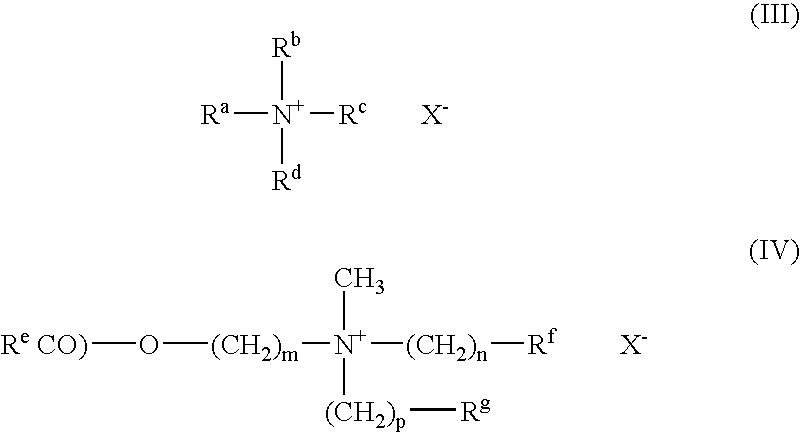Adhesion inhibition of fungi
- Summary
- Abstract
- Description
- Claims
- Application Information
AI Technical Summary
Benefits of technology
Problems solved by technology
Method used
Image
Examples
examples
1. The Adhesion Test on Textiles
For assessment of the inhibitory action of different substances on the adhesion of fungi, a procedure with which this adhesion to textiles can be determined semi-quantitatively was developed.
A50 ml C. albicans culture (strain SC5314) was grown overnight with shaking in a conical flask at 30° C. up to an optical density (OD) of ca. 1 (measured at 600 nm with a spectrophotometer). After washing once in water, the cells were again incubated for one hour at 30° C. with shaking. Next, 2.5 ml of the culture were diluted in 22.5 ml of YPD medium (1% yeast extract, 2% peptone, 2% glucose) or YPS medium (1% yeast extract, 2% peptone, 10% horse serum). The YPD cultures were incubated with shaking for 2 hours at 30° C., and the YPS cultures for 2 hours at 37° C. for the induction of hyphae.
As desired, test substance was added to the media. In addition a 2.5×2.5 cm piece of test fabric (polyester microfibers) was added to the media. After incubation, the t...
PUM
| Property | Measurement | Unit |
|---|---|---|
| Percent by mass | aaaaa | aaaaa |
| Percent by mass | aaaaa | aaaaa |
| Percent by mass | aaaaa | aaaaa |
Abstract
Description
Claims
Application Information
 Login to View More
Login to View More - R&D
- Intellectual Property
- Life Sciences
- Materials
- Tech Scout
- Unparalleled Data Quality
- Higher Quality Content
- 60% Fewer Hallucinations
Browse by: Latest US Patents, China's latest patents, Technical Efficacy Thesaurus, Application Domain, Technology Topic, Popular Technical Reports.
© 2025 PatSnap. All rights reserved.Legal|Privacy policy|Modern Slavery Act Transparency Statement|Sitemap|About US| Contact US: help@patsnap.com



